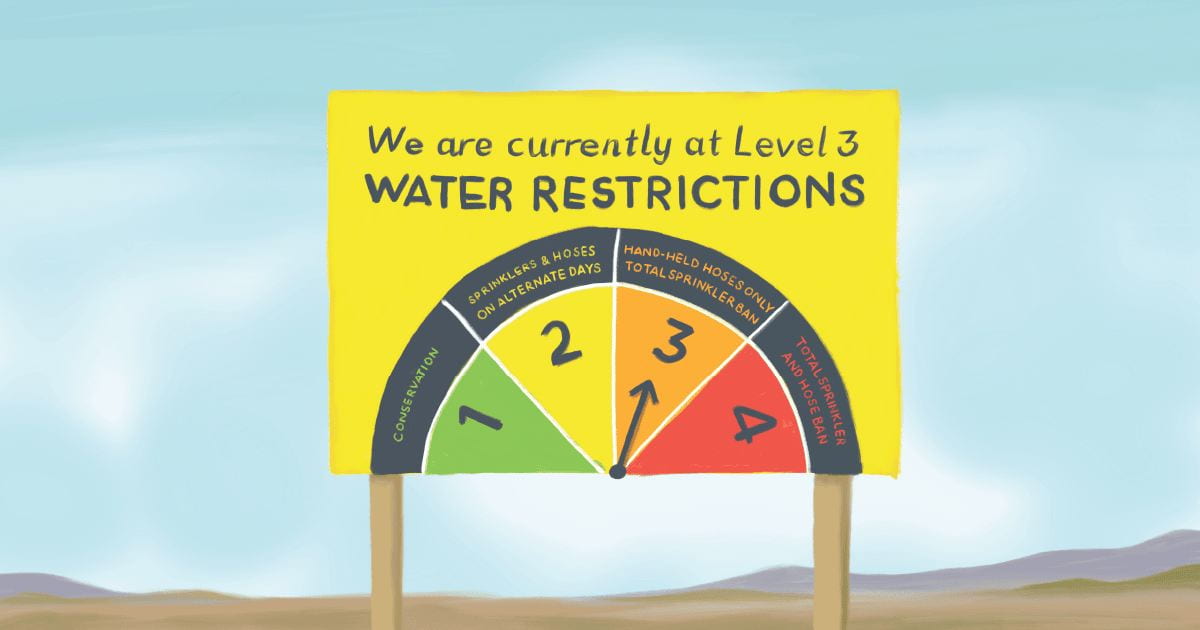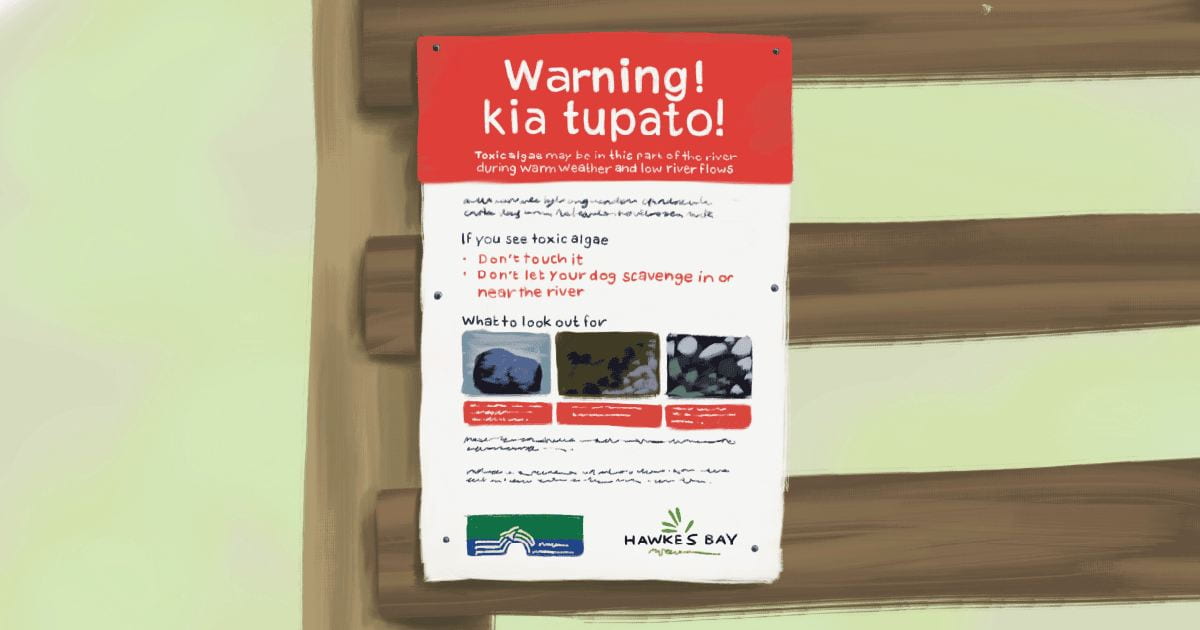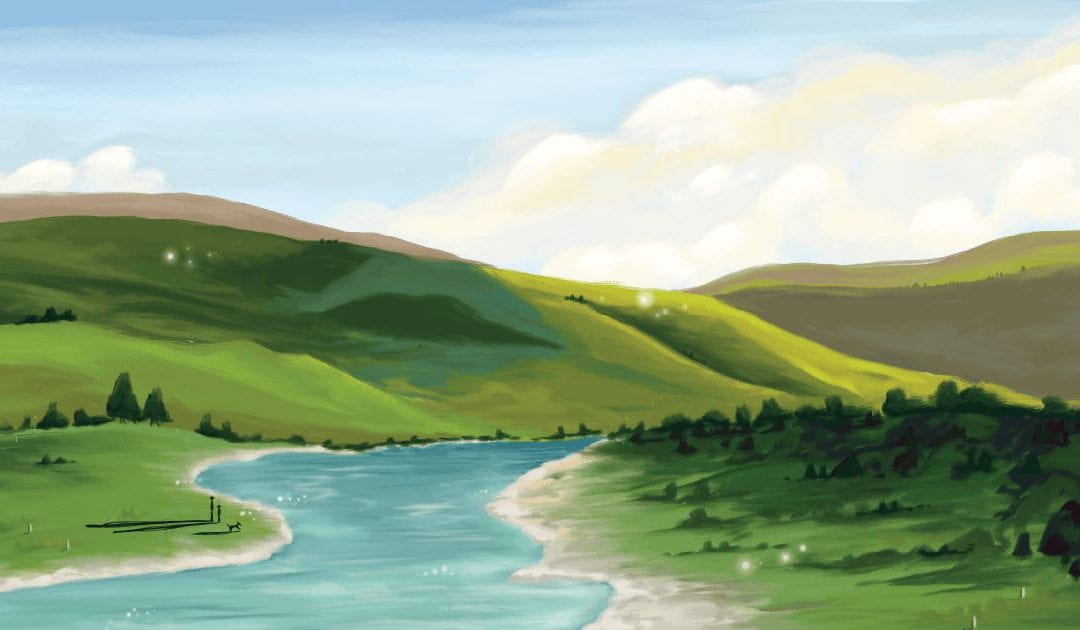1 May 2023
A collaboration between research assistant Claire Grant and illustrator Jean Donaldson. Edited by Jonathan Burgess.
“Right, let’s go Pup!” Dad sing-songs to our dog Blue as she bounces from left to right, bow-wowing at the top of her lungs. She’s just as excited about going hunting as we are. We’ve been through our list: boots – check, keys – check, rifle – check, but we’ve probably forgotten something important, as Mum likes to point out. Up goes the screechy roller door and we’re finally on our way.
Driving across the bridge we both look west, our eyes following the Waipawa river up to the Ruahine and Wakarara Ranges. “Oh yeah, not looking too bad aye,” I say in my blokiest voice as the blue-green mountains lean over us, silhouetted by clear skies. “Oh mate,” Dad replies. The Waipawa river leads the way for the first half of the drive, before it splits in two and the Makaroro takes over as our guide.
As we drive alongside the rivers, Dad and I reminisce, “Remember when we used to float down the river all the way from the Waipawa Bridge out to Patangata at the start of summer?”
“Yeah that was fun as. But we had to walk half the way because the river was so low.”

We’re halfway there when we have to stop and wait for a column of dairy cows to cross the road, udders swollen and swaying. We give the cows voices and personalities. Betsy’s a complainer, “Walking, walking and more walking” she says in a disgruntled drawl. And here comes the farmer, Trev, on his quad. Good bloke.
The road crinkles as the land compresses and the foothills emerge from the plains. We round a bend and the mountains fill the sky. Sweeping down the hillside to the Makaroro’s edge I wind down my window and breathe in the scent of toasted grass, while doing my best to feel the spirit of this place with the intensity I felt as a kid. It’s friendly yet ominous, inviting yet threatening.
Here is where the Makaroro begins its journey towards the pasture-land of Central Hawke’s Bay. It’s the same place I have returned to throughout my life, and each time it’s almost exactly as I remember it. It fills my soul to be here, to return home.
But this is the proposed site for the Ruataniwha dam.
*****
Droughts and dry spells have plagued Central Hawke’s Bay over the past several years, and climate change has pushed water security to the top of the list of local issues. The ecological health of the Tukituki catchment, within which the Waipawa and Makaroro rivers lie, is a major concern, though it is constantly vying for attention against agricultural irrigation demands.
With less water flowing in the rivers the concentration of pollutants increases, and ecological issues such as toxic algal blooms arise. The proposed Ruataniwha Dam was supposed to be Hawke’s Bay Regional Council’s silver bullet solution to support freshwater ecosystems and provide secure water for irrigation.
The council’s approach is an example of top-down environmental management. Top-down management tends towards the view that technology can provide environmental salvation and that systemic changes are unnecessary. When viewed in this way, the best solutions are those which are quick, cheap, and cause the least amount of social disruption. Through this lens, a dam is a logical solution.

This reliance on technology reflects only one of the wide range of worldviews that exist within communities. Take my position in the Ruataniwha Dam debate as an example. I am connected with the Makaroro river in a way which makes it more than just a resource. It is a lifetime of memories. It is a being with a spirit. It is so much more than a feasible site for water storage infrastructure. From my view, a dam is not an option.
My view is an example of a bottom-up environmental approach. Bottom-up approaches tend to be built on an holistic foundation. The environment is not viewed as an object apart from humanity, which exists only as a resource for economic gain.
Taking a bottom-up approach leads to very different solutions to environmental issues. Perhaps we should diversify our economy to increase resilience, or perhaps we need to build stronger relationships between people and their freshwater ecosystems to encourage responsible use. Such solutions are not quick or cheap. They are complex, and they certainly don’t avoid social disruption. They recognise the diversity of understandings and potential solutions that don’t fit within a top-down view.
There is rarely a perfect solution to environmental problems, whether it’s water scarcity in Central Hawke’s Bay, deforestation in the Amazon, or overfishing in the Southern Ocean. But ultimately we all want our communities to live prosperously in healthy environments for generations to come. When different ideas about what should be done about environmental issues clash and bring each other to a stand still, what do we do? The problems still exist and we need to do something.
So, do we build the dam, or do we not?
Claire Grant has been exploring top-down and bottom-up approaches as a research assistant on Te Pūnaha Matatini’s Ki te toi o te ora: System change to reverse health inequality and environmental degradation project.
Jean Donaldson is a designer and native bird fanatic based in Te Whanganui-a-Tara. You can see more of her work at https://jeanmanudesign.com/.

